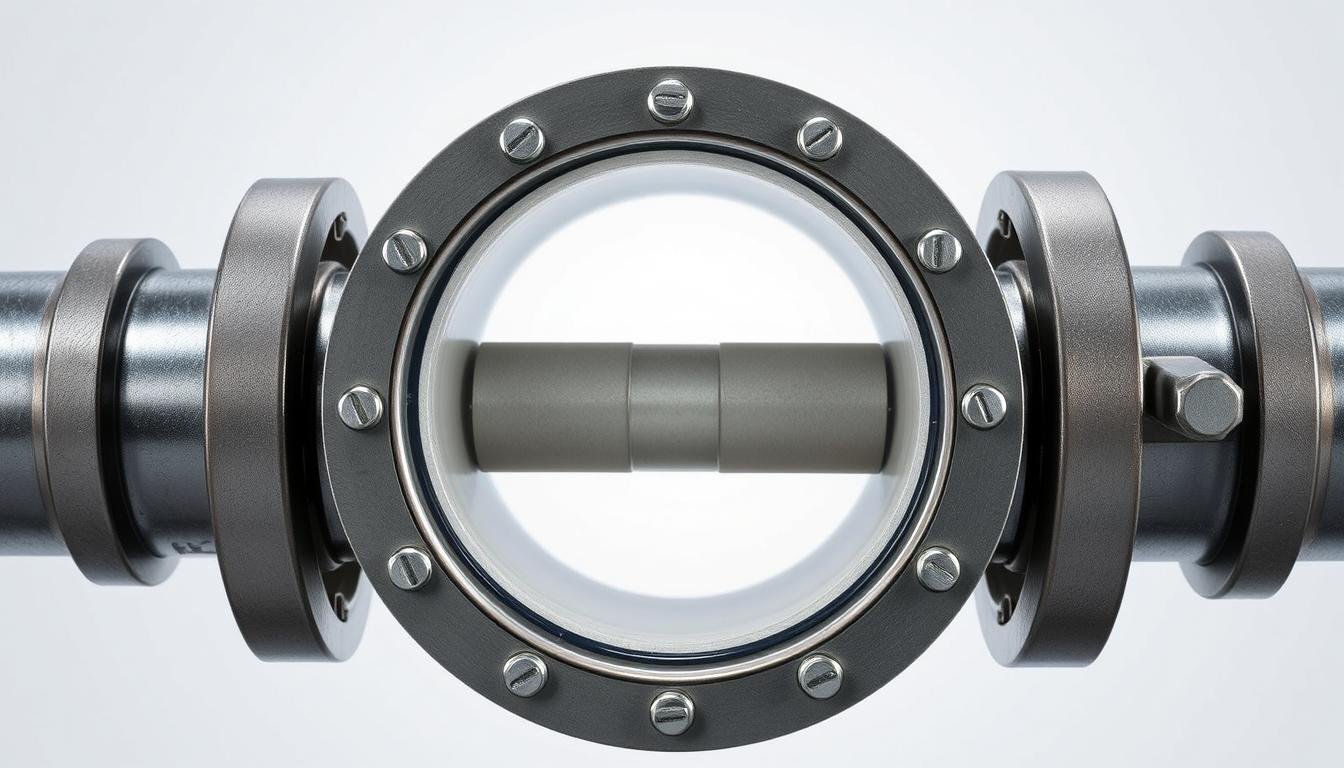Flange sealing is key to keeping piping and mechanical systems running smoothly. Flanges connect different parts, and gaskets and bolts are vital for a tight seal. Knowing about different flange types and sealing options is important for keeping systems safe and efficient.
This guide offers detailed insights based on industry standards and expert advice. It’s a great resource for those working with flange systems, whether it’s installation, maintenance, or design.
Understanding Flanges and Their Importance:
Flanges are key parts that connect pipes, valves, or equipment. They make sure the connection is tight and leak-free. This is very important in places like oil and gas, water treatment, and chemical plants.
There are many types of flanges, like welding neck, slip-on, blind, and threaded. Each one is made for different needs, like how much pressure it can handle or the temperature it works in.
Knowing which flange to use is key to keeping pipelines safe. The right flange can stop leaks and keep systems running smoothly. Using the right flange techniques is not just a choice; it’s a must for keeping everything working well and safely.
Types of Gaskets for Flange Sealing:
Knowing the different types of gaskets is key for good flange sealing. Gaskets are vital for stopping leaks, acting as a strong barrier between flanges. The choice of gasket material greatly affects how well it seals. Rubber is flexible and stands up to many chemicals. PTFE (Teflon) is durable and can handle high temperatures.
Spiral-wound gaskets seal well, even under tough conditions. Flat gaskets, made from softer materials, work well in certain situations. When picking sealing gaskets, I look at many factors. This includes the conditions it will face, like the type of media, temperature, and pressure.
Choosing the right gasket is critical for flange joints to last long and work well. By carefully picking gaskets, we can avoid leaks and improve system performance. Understanding the various gaskets and their materials is very beneficial.
Bolted Connections: A Critical Component:
Bolted connections are key to securely fastening flanges. They help keep the flanges tight, preventing leaks. It’s important to make sure the load is evenly spread across the bolts.
Following the torque specifications is a must during installation. These specs tell us how much force to apply to the bolts. Using a torque wrench is essential to get it just right. Too little or too much force can damage the seal and pose safety risks.
Flange Design Considerations:
When I design flanges, choosing the right type and material is key. The material you pick affects how well the system works. Things like temperature, pressure, and the media type matter a lot.
Materials like carbon steel, stainless steel, and alloys are common. Each has its own strengths and weaknesses.
Knowing the flange specifications is also important. Things like pressure class and size matter a lot. They affect how well the flange fits and works in its place.
Each flange type has its own set of specs. The right mix ensures safety and reliability.
Installation Best Practices:
Getting a flange installed right is key to a reliable seal. I start by making sure the flange is clean and free of dirt. This step is vital for a tight seal and better system performance.
For bolting, I use a star pattern. It spreads the load evenly, avoiding warping. Following these steps boosts the seal’s performance and cuts down on leaks and failures.
Maintenance and Troubleshooting Flange Seals:
Keeping flange seals in good shape is key to their long life and performance. I’ve seen many seal failures due to bad installation, wear over time, or not enough bolt tightening. Regular checks and timely repairs help a lot in avoiding big problems.
Preventive maintenance is vital to avoid flange seal issues. Using tools like ultrasonic testing and visual checks helps me spot wear early. This way, I can fix or replace seals before they cause bigger problems or system failures.
In short, being proactive with flange maintenance and quick troubleshooting keeps systems running smoothly. Regular checks and knowing why seals fail help me keep flanges working well. This approach keeps my systems reliable and efficient for a long time.
